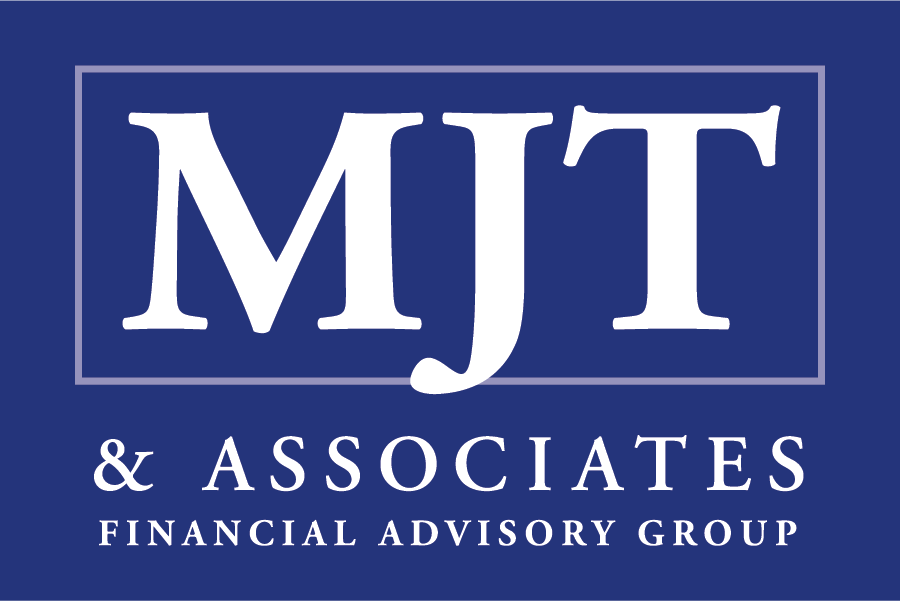Are you prepared for retirement? Financial planning is a crucial aspect of ensuring a comfortable and stress-free retirement. In this article, we will explore the importance of financial planning for retirement and provide you with valuable tips and strategies to help you navigate this significant life stage.
As you approach retirement, it's essential to have a comprehensive plan in place to secure your financial future. Without proper planning, you might find yourself struggling to cover your expenses or unable to enjoy the retirement lifestyle you envisioned.
Planning for retirement involves setting realistic financial goals, assessing your current financial situation, and creating a strategy to maximize your savings and investments. It also involves understanding the various retirement vehicles available, such as 401(k)s, IRAs, and Social Security, and making informed decisions regarding when and how to access these funds.
In this article, we will delve into the importance of retirement planning, share practical tips on saving for retirement, and discuss various strategies to help you meet your financial goals. Whether you're just starting to think about retirement or nearing the big day, this article will provide you with valuable insights and guidance to ensure a financially secure and rewarding retirement.
The benefits of early financial planning for retirement
Planning for retirement early offers numerous benefits. By starting early, you have more time to accumulate savings and investments, allowing your money to grow over time. This is especially important considering the power of compounding interest. The earlier you start saving, the more time your investments have to generate returns.
Early planning also gives you the opportunity to set realistic financial goals and make adjustments along the way. By assessing your current financial situation, you can identify any gaps and take steps to bridge them. This might involve increasing your savings rate, exploring investment opportunities, or considering additional income streams.
Furthermore, early planning allows you to take advantage of tax-efficient retirement accounts, such as 401(k)s and IRAs. By contributing to these accounts, you can reduce your taxable income and potentially receive employer matching contributions, maximizing your retirement savings potential.
Statistics on retirement savings and financial preparedness
It's alarming to note that many individuals are not adequately prepared for retirement. According to recent studies, a significant portion of the population has little to no retirement savings. This lack of preparedness can lead to financial hardships during retirement.
A survey conducted by the Employee Benefit Research Institute found that 40% of workers have less than $25,000 in savings and investments. Another study by the National Institute on Retirement Security revealed that the median retirement account balance for working-age households is only $3,000, while the median retirement savings for individuals nearing retirement is just $12,000.
These statistics highlight the importance of taking action and implementing a solid retirement financial plan. Without proper planning, individuals may face financial difficulties and be forced to rely solely on Social Security benefits, which may not be sufficient to maintain their desired standard of living.
Key components of a solid retirement financial plan
A solid retirement financial plan consists of several key components that work together to ensure a financially secure retirement. These components include:
- Setting Retirement Goals: Determine your desired retirement lifestyle and set specific financial goals to achieve it. Consider factors such as travel, healthcare expenses, and hobbies to estimate your retirement needs accurately.
- Assessing Your Current Financial Situation: Evaluate your current income, expenses, and assets to understand your financial standing. This assessment will help you identify areas for improvement and determine how much you need to save for retirement.
- Creating a Savings Strategy: Develop a savings strategy that aligns with your retirement goals. This may involve contributing to retirement accounts, such as 401(k)s or IRAs, as well as exploring other investment options to diversify your portfolio.
- Managing Debt: Address any outstanding debt, such as credit cards or loans, as part of your retirement financial plan. Reducing debt before retirement can alleviate financial stress and free up more resources for saving and investing.
- Estimating Retirement Income: Calculate your projected retirement income from various sources, including Social Security, pensions, and investment returns. This estimation will help you determine if you're on track to meet your retirement goals.
- Contingency Planning: Prepare for unexpected events, such as medical emergencies or market downturns, by establishing an emergency fund. This fund should cover at least six months' worth of living expenses to provide a safety net during retirement.
- Regular Review and Adjustments: Regularly review your retirement financial plan and make adjustments as needed. Life circumstances and financial markets can change, and it's essential to stay flexible and adapt your plan accordingly.
By incorporating these components into your retirement financial plan, you can have peace of mind knowing that you're taking the necessary steps to secure your financial future.
Setting retirement goals and determining your retirement needs
Setting clear retirement goals is a critical first step in the financial planning process. Without goals, it's challenging to determine how much you need to save and invest to achieve the lifestyle you desire during retirement.
When setting retirement goals, consider both short-term and long-term objectives. Short-term goals may include paying off outstanding debt or saving for a specific expense, such as a dream vacation. Long-term goals, on the other hand, focus on your overall retirement lifestyle and financial security.
To accurately determine your retirement needs, consider factors such as living expenses, healthcare costs, inflation, and desired activities. It's essential to account for potential changes in your lifestyle and any additional expenses that may arise during retirement.
Once you have established your retirement goals and estimated your retirement needs, you can work backward to calculate how much you need to save and invest each month to achieve those goals. This exercise provides a clear target and motivates you to stay on track with your savings plan.
Tips for saving and investing for retirement
Saving and investing for retirement requires discipline and a long-term perspective. Here are some tips to help you maximize your retirement savings:
- Start Early: As mentioned earlier, starting early is crucial. The power of compounding interest means that even small contributions made early on can grow significantly over time. Take advantage of this by starting to save for retirement as soon as possible.
- Automate Your Savings: Set up automatic transfers from your paycheck to your retirement accounts. This ensures that you consistently save without the temptation to spend the money elsewhere.
- Take Advantage of Employer Contributions: If your employer offers a retirement savings plan, such as a 401(k), contribute at least enough to receive the maximum employer match. This is essentially free money that can significantly boost your retirement savings.
- Diversify Your Investments: Spread your investments across different asset classes, such as stocks, bonds, and real estate, to minimize risk. Diversification helps protect your portfolio from market fluctuations and increases the potential for long-term growth.
- Maximize Contributions to Retirement Accounts: Contribute the maximum amount allowed to your retirement accounts each year. For 2021, the contribution limit for 401(k)s is $19,500, with an additional catch-up contribution of $6,500 for individuals aged 50 and older.
- Consider Roth Accounts: If eligible, consider contributing to a Roth IRA or Roth 401(k). While contributions to these accounts are not tax-deductible, qualified withdrawals in retirement are tax-free. This can provide valuable tax advantages, especially if you anticipate being in a higher tax bracket during retirement.
By implementing these tips, you can significantly boost your retirement savings and increase the likelihood of achieving your financial goals.
Strategies for maximizing retirement income
Maximizing retirement income involves making informed decisions regarding when and how to access your retirement funds. Here are some strategies to consider:
- Delay Social Security Benefits: Delaying Social Security benefits beyond your full retirement age can result in higher monthly payments. For each year you delay, your benefit amount increases, up until age 70. This can provide a substantial increase in income during your retirement years.
- Create a Withdrawal Strategy: Develop a withdrawal strategy for your retirement accounts to ensure you don't outlive your savings. This strategy involves determining how much to withdraw each year while considering factors such as tax implications and market conditions.
- Consider Annuities: Annuities are financial products that provide a guaranteed income stream for life or a specific period. They can be a valuable addition to your retirement income strategy, providing a stable source of income to cover essential expenses.
- Explore Part-Time Work: If you're willing and able, consider working part-time during retirement. Not only can this provide additional income, but it can also help you stay engaged and maintain a sense of purpose.
- Manage Taxes: Be mindful of the tax implications of your retirement income sources. By strategically managing your income and taking advantage of tax-efficient strategies, you can minimize your tax burden and maximize your after-tax income.
These strategies can help you optimize your retirement income and ensure a more comfortable and financially secure retirement.
Common mistakes to avoid in retirement financial planning
While it's important to focus on what to do when planning for retirement, it's equally essential to be aware of common mistakes to avoid. Here are some mistakes to steer clear of:
- Procrastination: Delaying retirement planning can significantly impact your financial well-being in retirement. The earlier you start, the better off you'll be. Don't wait until it's too late to take action.
- Underestimating Expenses: Failing to accurately estimate your retirement expenses can lead to financial hardships during retirement. Account for all potential expenses, including healthcare costs and inflation, to ensure your savings are sufficient.
- Ignoring Inflation: Inflation erodes the purchasing power of your money over time. Failing to account for inflation when setting retirement goals can result in falling short of your financial needs.
- Taking on Too Much Risk: While some level of risk is necessary to generate returns, taking on excessive risk can jeopardize your retirement savings. Maintain a balanced investment portfolio that aligns with your risk tolerance and financial goals.
- Relying Solely on Social Security: Social Security benefits alone may not provide enough income to sustain your desired lifestyle during retirement. Supplement your Social Security income with other savings and investments.
- Not Seeking Professional Advice: Retirement planning can be complex, and seeking professional advice can provide valuable insights and guidance. Consider consulting with a financial advisor or retirement planner who can help you navigate the intricacies of retirement planning.
Avoiding these common mistakes can significantly improve your retirement financial planning outcomes and set you on a path to a more secure future.
The role of professionals in retirement financial planning
While it's possible to create a retirement financial plan on your own, working with professionals can provide valuable expertise and peace of mind. Financial advisors and retirement planners specialize in helping individuals navigate the complexities of retirement planning and can offer personalized advice tailored to your unique circumstances.
These professionals can provide guidance on various aspects of retirement planning, including asset allocation, tax planning, and withdrawal strategies. They can also help you stay on track with your goals and make adjustments as needed based on changes in your life or the financial landscape.
When choosing a professional, look for someone with relevant experience, certifications, and a fiduciary duty to act in your best interests. Take the time to research and interview potential advisors to ensure a good fit.
Conclusion: Taking control of your financial future through retirement planning
Retirement planning is a crucial step towards ensuring a comfortable and stress-free retirement. By starting early, setting clear goals, and implementing sound strategies, you can take control of your financial future and enjoy the retirement lifestyle you desire.
Remember to regularly review your retirement financial plan, make adjustments as needed, and seek professional advice when necessary. With proper planning and diligent execution, you can navigate the complexities of retirement and embark on a financially secure and rewarding journey.
Take the first step today and start planning for your retirement. Your future self will thank you.











